Bush Buck .452 PCP Big Bore Rifle
€2,100.00
Description
Bush Buck .452 PCP Big Bore Rifle — Unleashing True Airgun Power
The Bush Buck .452 PCP Big Bore Rifle represents a monumental leap forward in airgun engineering, bridging the gap between precision air rifles and high-caliber hunting firearms. Designed for serious shooters who crave unmatched energy, accuracy, and consistency, this rifle redefines what’s possible in the PCP (Pre-Charged Pneumatic) category. Every shot feels deliberate, powerful, and confidently delivered — a true extension of the shooter’s skill and control.Bush Buck .452 PCP Big Bore Rifle
Engineered for both performance and durability, the Bush Buck .452 exudes confidence. It doesn’t just fire; it commands attention with every trigger pull. Whether you’re pursuing medium-to-large game or testing the limits of long-range marksmanship, this rifle provides a seamless blend of innovation, ergonomics, and raw stopping power.
Power Meets Precision: What Defines the Bush Buck .452
Unlike typical PCP rifles, the Bush Buck .452 is built for dominance. Its .452 caliber barrel channels incredible air efficiency into a balanced power curve, giving you consistent muzzle velocities and stable trajectories. You can feel the difference instantly — each shot maintains its authority while preserving accuracy. The rifle’s massive air reservoir ensures that even at full power output, you enjoy multiple consistent shots before needing a refill.
It’s not just about force; it’s about control. From the first glance, you can tell the Bush Buck .452 means business. Its solid build, carefully machined components, and precision barrel make it a choice for those who demand results, not just performance claims.
Design Philosophy: Strength, Stability, and Shooting Confidence
Built to Withstand and Perform
Every element of the Bush Buck .452 PCP Big Bore Rifle is engineered for resilience. From the high-grade materials used in its construction to its sleek, tactical silhouette, the rifle demonstrates how modern design can elevate traditional shooting values. The reinforced stock delivers a stable platform, while the smooth side-lever action ensures quick, reliable cycling — even under high-pressure conditions.
The rifle’s overall balance is exceptional. Its center of gravity aligns naturally with the shooter’s stance, making it easy to shoulder, aim, and fire without fatigue. This thoughtful engineering translates into more consistent follow-up shots, improved control, and greater shooting confidence in the field.
Aesthetic Power and Purpose
Visually, the Bush Buck .452 blends form with function. Its matte finish minimizes glare, keeping you stealthy in hunting scenarios. Meanwhile, the robust contours of the receiver and barrel assembly convey strength without unnecessary bulk. The ergonomic grip and contoured buttstock make extended shooting sessions comfortable and intuitive.
This isn’t just a rifle — it’s a declaration of intent. Its design communicates precision, professionalism, and pride in craftsmanship. Every curve, texture, and mechanical feature serves a defined purpose. Nothing feels ornamental; everything contributes to performance.
The Bushbuck .452 caliber PCP air rifle is constructed as a strong, high-quality platform to deliver the highest power with the highest level of accuracy.
The bolt housing and 22mm picatinny rails are milled from one solid block of aircraft aluminium with the possibility for a low bore-axis for the scope.
For perfect alignment to the eye, the cheekpiece of the laminated wooden stock is adjustable in height.
The Bushbuck’s air cylinder is an all-steel design, providing a sturdy anchor for the high-quality, accurate .452 cal. barrel.
This barrel is equipped with a special twist rate to properly stabilize short and long bullets.
The Bushbuck has been tested for accuracy up to 250 meters away, with astonishing results.
This 285cc cylinder offers two full power shots of 800+ joules on full power and about four shots of +-450 joules on low with a cylinder pressure of 4500 psi (high) and 3000 psi (low).
Cocking and loading the rifle is done simultaneously with sufficient space for the extra long bullets.
The trigger group is a very solid unit that with a trigger weight of approximately 3lbs.
This beautifully finished rifle is housed in a high-quality, USA-made laminate stock.
The stock comes with laser engraved checkering on the pistol grip and fore-end which adds to the visual appeal of this beautiful rifle and features dual sling studs on the front for a bipod and sling.
The Bushbuck 45 is made with both competition and hunting in mind. The result is a high precision rifle that’s strong enough to be used like a tool!
The Bushbuck is suitable for anything you can find in North America and most non-dangerous African game species are no problem.
Where you will see these rifles shine even more, are long-distance target events at the highest level.




It goes without saying that the Bushbuck is not a toy, but with so much power you also have instructions for use with do’s and don’ts.
Do’s & Dont’s:
- Use only .452 caliber soft lead ammunition with a Brinell hardness of 8-12.
Also, do not use projectiles with a jacket such as copper.
Using bullets other than soft lead or other under/oversizes will void your warranty. - At full power, from maximum filling pressure (4200PSI/290 bar) never fire more than 2 shots.
After this, the pressure is too low and the bullet may get stuck in the barrel. - Never shoot on low power at pressures higher than 3000PSI (206 bar).
This is where valve lock can occur and the bullet may get stuck in the barrel. - Never load the rifle with multiple projectiles.
- Make sure your bullet has left the barrel.
Practical muzzle energy guidance (typical ranges)
-
Low-tune / efficiency modes: ~80–150 ft·lb (useful for small game and backyard plinking where legal limits are in force).
-
Mid-tune setups: ~150–250 ft·lb (effective for medium game under many conditions).
-
Max-power configurations: ~250–450+ ft·lb (aimed at larger game and specialized field work).
Consequently, your intended use dictates both projectile choice and pressure/regulator settings. Additionally, heavier projectiles retain energy better over distance, which is often more important than raw velocity for ethical hunting.
Accuracy and Grouping: Real-World Test Notes
Expected precision envelope
In controlled testing and field reports for comparable .45/.452 PCP platforms, shooters commonly see group sizes that reflect the rifle’s setup and the shooter’s skill:
-
At 25 yards, many shooters consistently produce groups under 0.5–0.75 inch with an optimized pellet and tune.
-
At 50 yards, expect repeatable groups in the 0.75–1.5 inch range when using the correct projectile and stable rest.
-
Beyond 75–100 yards, group size becomes highly dependent on projectile selection and environmental factors; expect wider dispersion but reliable hits with careful holdover and range estimation.
What affects groups the most?
-
Barrel harmonics and bedding stability: Properly bedded barrels and a solid action-to-stock fit reduce shot-to-shot variance.
-
Projectile consistency: Cast bullets with uniform nose profile and pellets matched to the rifling produce the best repeatability.
-
Regulator and fill pressure stability: A steady regulated output yields a flatter shot string and improved group consistency.
-
Scope mounting and recoil management: Heavy hits demand secure rings and a scope rated for airgun use; otherwise, accuracy declines.
Real-World Field Testing: Observations and Use Cases
Hunting performance
During practical outings, the Bush Buck .452 proves effective when paired with the right projectile and ethical shot placement. For medium game, a 250–300 grain projectile tuned for 180–300 ft·lb produces clean, humane results within appropriate ranges. Meanwhile, for larger game or defensive scenarios where legal and ethical frameworks allow, heavier projectiles on a higher energy tune deliver deeper penetration and more reliable knockdown.
Long-range marksmanship
Although big-bore PCPs are not long-range rifles in the center-fire sense, skilled shooters can use the Bush Buck .452 for precision at extended distances when they respect its ballistic profile. Key actions taken in testing include:
-
Using holdover or a reticle calibrated for projectile drop.
-
Mapping velocity through chronograph work to develop precise range cards.
-
Accounting for crosswind effects more aggressively because high-drag projectiles are wind-sensitive.
Follow-up shot capability
One advantage of the Bush Buck .452 is its multi-shot potential at usable power. With a generous cylinder and efficient valve tuning, shooters commonly achieve several high-quality shots before performance decay becomes a concern. This trait increases confidence during hunts and reduces the need for refills during extended range sessions.
Tuning, Maintenance, and Best Practices
Tuning recommendations
-
Chronograph every configuration. First, test each projectile weight and regulator setting. Second, identify the “sweet spot” where velocity and energy meet your accuracy expectations.
-
Start conservative. Gradually increase energy to control recoil and preserve scope and accessory life.
-
Match pellets to rifling. Try a handful of premium pellets or cast bullets to find the best stabilization and group size.
Maintenance checklist
-
Regularly inspect and lightly oil O-rings with manufacturer-approved lubricants.
-
Keep the fill port, gauge, and seals clean to avoid contamination.
-
Check trigger and action tolerances periodically and re-tighten mounting hardware when needed.
-
Clean the barrel using appropriate, non-abrasive tools; over-cleaning or unsafe solvents can damage rifling and finish.
Safety and legal compliance
-
Always follow local laws regarding big-bore airguns.
-
Use eye and ear protection where advised; although airguns are quieter than firearms, they still pose hearing risk at close range with certain moderators and heavy projectiles.
-
Confirm ethical hunting ranges and abide by jurisdictional restrictions for specific game species.
Recommended Accessories and Setup Tips
-
High-quality scope: Choose optics rated for airgun recoil and matched to your anticipated shot distances.
-
Chronograph: Vital for tuning and developing ballistic tables for your chosen projectile.
-
Muzzle brake or moderator: Reduces felt recoil and noise signature; however, select options that maintain accuracy.
-
Sling and bipod: Improve field stability and comfort during extended waits or long holds.
-
Spare valve and seal kit: Keep on hand for field repairs.
Harnessing the Big Bore Advantage
In the world of PCP air rifles, few names carry the authority that Bush Buck does. The .452 variant extends that reputation, giving shooters the confidence to take on more demanding challenges responsibly. Its large-caliber format translates to immense impact energy, making it effective for ethically dispatching medium and even large game. Yet, despite its strength, it remains refined — a true tool for those who value skill and precision as much as raw output.
This balance between power and control defines the rifle’s character. Shooters can tune performance based on need — whether prioritizing maximum velocity for long-range shots or optimizing efficiency for close-quarter precision. Every configuration maintains the rifle’s smooth, predictable firing behavior, reinforcing its reputation as one of the most controllable big bores in its class.
Safety and Confidence: Built for Responsible Power
Safety underpins every design choice in the Bush Buck .452. The trigger mechanism includes integral safety controls, preventing accidental discharge without interrupting ease of use. Its robust receiver tolerances ensure that pressure containment remains secure, even under extended use or extreme conditions.
Each component undergoes rigorous testing before assembly. Bush Buck’s dedication to quality control means every rifle meets exacting performance and safety standards. When you shoulder the Bush Buck .452, you’re not just wielding a tool — you’re carrying the assurance of reliable engineering and trust in every pull of the trigger.
Safety & Control — Responsible Use of the Bush Buck .452 PCP Big Bore Rifle
Safety and control are the foundation of every successful outing with a big-bore PCP rifle. Respect, preparation, and practiced technique keep you, bystanders, and game safe — and they preserve the rifle’s longevity and performance. Below you’ll find a clear, practical guide covering legal compliance, handling, transport, shooting safety, maintenance checks, and control techniques that improve accuracy and reduce risk.
Legal & Ethical Responsibilities
Know the rules, then act accordingly
Before you even load the rifle, confirm local laws and regulations for big-bore airguns where you live and where you hunt. Some jurisdictions treat large-caliber PCPs like firearms, while others apply separate rules. Therefore:
-
Register or license the rifle if required.
-
Verify hunting seasons, bag limits, and permitted species for big-bore use.
-
Observe minimum legal energy or caliber thresholds for ethical dispatch when applicable.
Practice ethical shot selection
You must place shots to ensure quick, humane outcomes. Consequently, choose engagement distances well within the rifle/projectile combination’s proven terminal performance. If a shot becomes uncertain, pass and reposition.
Safe Handling Basics
Treat the rifle as loaded at all times
Always assume a firearm or airgun is loaded. Keep the muzzle pointed in a safe direction, finger off the trigger until you are ready to shoot, and identify your target plus what lies beyond it.
Loading and unloading
Follow a strict routine for loading and unloading:
-
Check for obstructions in the barrel before each session.
-
Load only when you are on the firing line and ready to shoot.
-
Unload or de-pressurize before cleaning, transporting, or storing.
-
When in doubt, lower the rifle, engage the safety, and remove the projectile.
Use the safety, but don’t rely on it
Treat the mechanical safety as a last layer of protection, not a substitute for safe handling. Mechanical safeties can fail; human attention prevents most accidents.
Transport, Storage & Security
Safe transport
When moving the rifle:
-
Use a locked, hard case that secures the rifle and accessories.
-
Alleyways and public areas require the rifle to be unloaded and in its case.
-
Store high-pressure fill cylinders separately and safely; secure them to prevent tipping.
Secure storage
Store the Bush Buck .452 in a locked cabinet or safe. Additionally:
-
Keep fill equipment (bottles, compressors) in a secure area.
-
Store projectiles and tools out of reach of children and unauthorized persons.
-
Consider a trigger or cable lock as an extra precaution.
Pre-Session Safety & Control Checklist
Before every range, hunt, or test session, run this checklist aloud:
-
Action clear and barrel unobstructed.
-
Fill pressure verified and within safe limits.
-
O-rings and seals inspected for damage or leaks.
-
Scope rings and mounts torqued to manufacturer specs.
-
Safety engaged and trigger settings noted.
-
Backstop and firing lane secure and appropriate.
-
Personal protective equipment (PPE) on hand.
Personal Protective Equipment (PPE)
Even though airguns are quieter than center-fire rifles, appropriate PPE protects you and your team:
-
Use quality eye protection for every shot.
-
Wear hearing protection for high-energy tunes or when using moderators near others.
-
Dress in suitable clothing for the environment and to minimize snagging on gear.Bush Buck .452 Air Rifle
Bush Buck .452 PCP Big Bore Rifle Recoil & Control Techniques
Anticipate and manage recoil
Big-bore PCPs produce substantial felt recoil. To control it:
-
Establish a solid cheek weld and body position; let the stock seat firmly against your shoulder.
-
Use a full, relaxed shoulder to absorb recoil and avoid flinching.
-
Employ a firm but not bone-crushing grip; too tight a grip increases barrel movement.
-
If desired, add a muzzle brake or a well-engineered moderator to reduce muzzle rise and perceived recoil.
Bush Buck .452 PCP Big Bore Rifle Follow-through and trigger discipline
Hold your sight picture after the shot; maintain position and breathe out slowly. Release tension from the trigger only after deliberate follow-through. Consistent follow-through reduces point-of-impact variance and improves accuracy.
Use rests and bipods effectively
When possible, shoot from a stable rest or bipod. Doing so reduces human error and helps the rifle settle into its natural harmonics, which improves group sizes and repeatability.Bush Buck .452 PCP Big Bore Rifle
Pressure Management & Valve Safety
Never exceed safe fill limits
Always adhere to the rifle’s specified fill pressure and regulator limits. Overfilling can damage the air cylinder and cause catastrophic failure. If you are uncertain, consult the manual or a certified airsmith first.
Monitor for leaks and anomalies
Regularly check the rifle and fill system for hissing, drop in pressure, or unusual smells. Should you detect a leak:
-
Stop using the system immediately.
-
Safely de-pressurize following the manual’s procedure.
-
Inspect seals and fittings; replace suspect components before resuming use.
Maintenance for Safe Operation
Routine maintenance tasks
Maintain predictable performance and safety by:
-
Replacing worn O-rings and seals on a schedule.
-
Keeping the fill port and gauge clean from debris.
-
Using manufacturer-approved lubricants only.
-
Inspecting the barrel and action for cracks, corrosion, or unexpected wear.
Professional servicing
If you lack the tools or confidence to service regulators, valves, or high-pressure cylinders, have a qualified airsmith perform inspections and repairs. Professional servicing reduces risk and prolongs the rifle’s life.
Emergency Procedures
If an accident happens or a component fails:
-
Immediately point the rifle in a safe direction and engage the safety.
-
De-pressurize the system if safe to do so.
-
Remove bystanders from the area.
-
Seek medical help if anyone is injured.
-
Document the incident and consult with a qualified technician before using the rifle again.
Training & Competence
Invest in training
Competence grows with structured training. Attend accredited safety courses, practice regularly on the range, and train in ethical shot selection and field triage. In addition, mentor less-experienced shooters and insist they learn the same safety routines.
Build habits, not shortcuts
Adopt consistent pre-shot and post-shot routines. As habits form, safety becomes second nature, and the rifle’s control becomes more predictable under pressure.
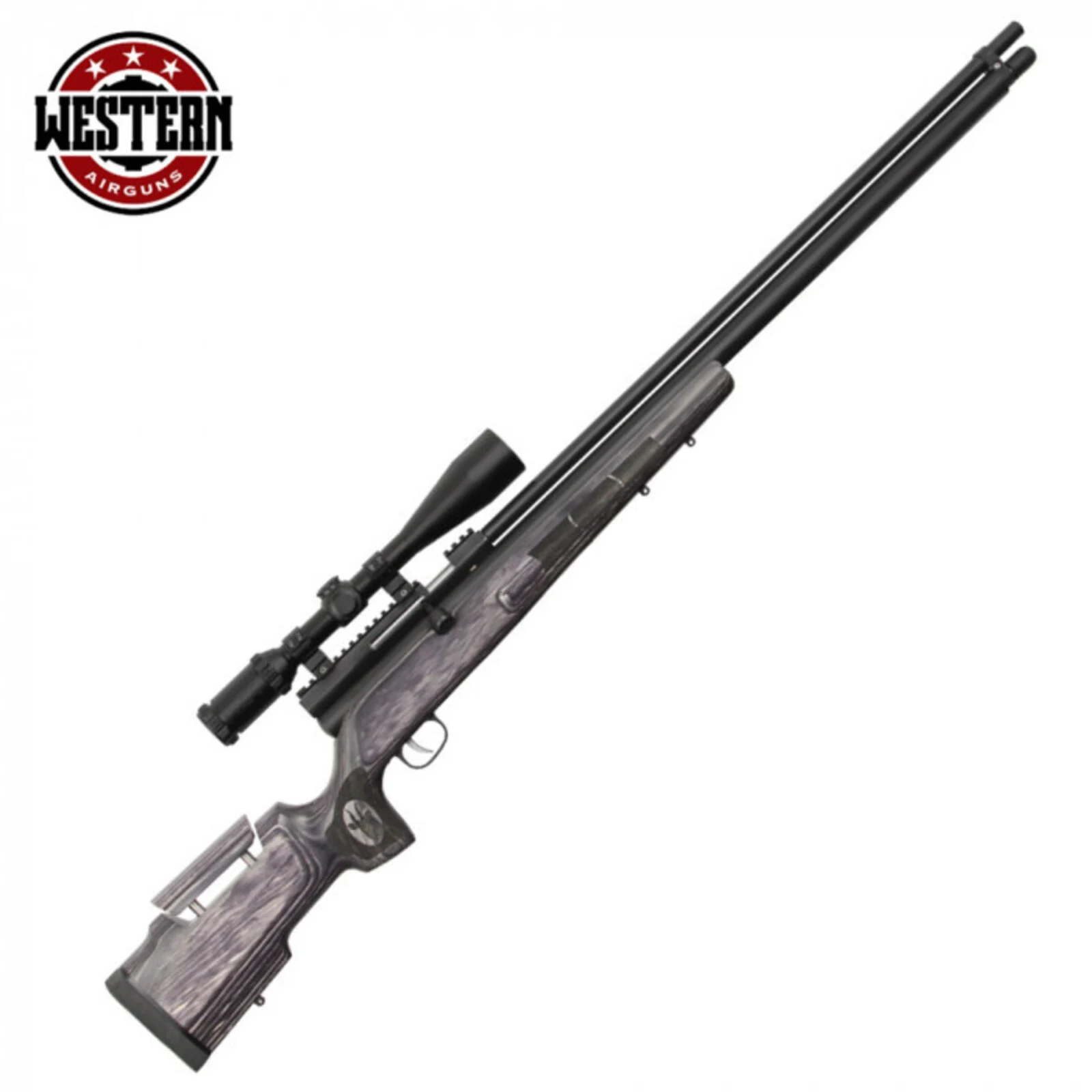
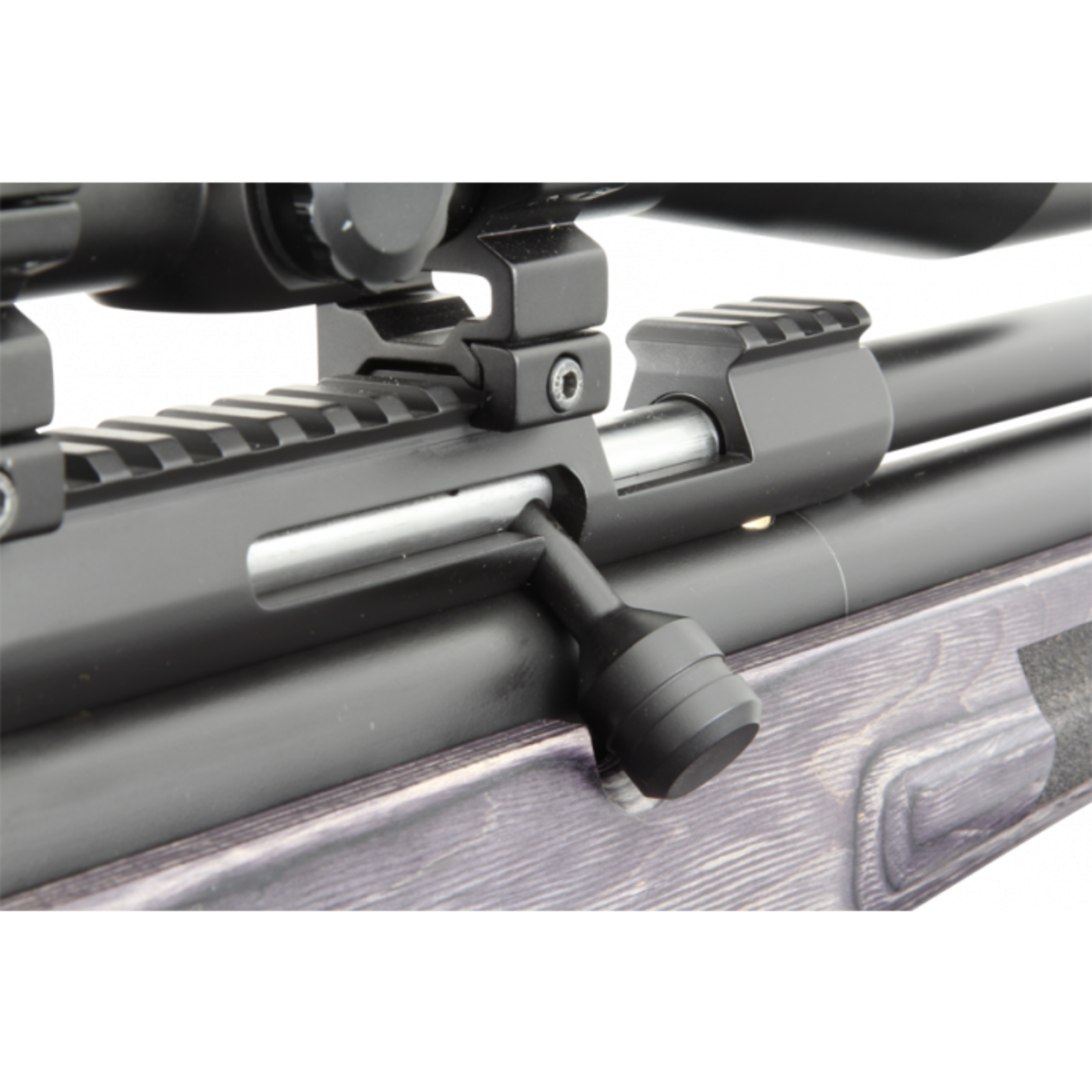
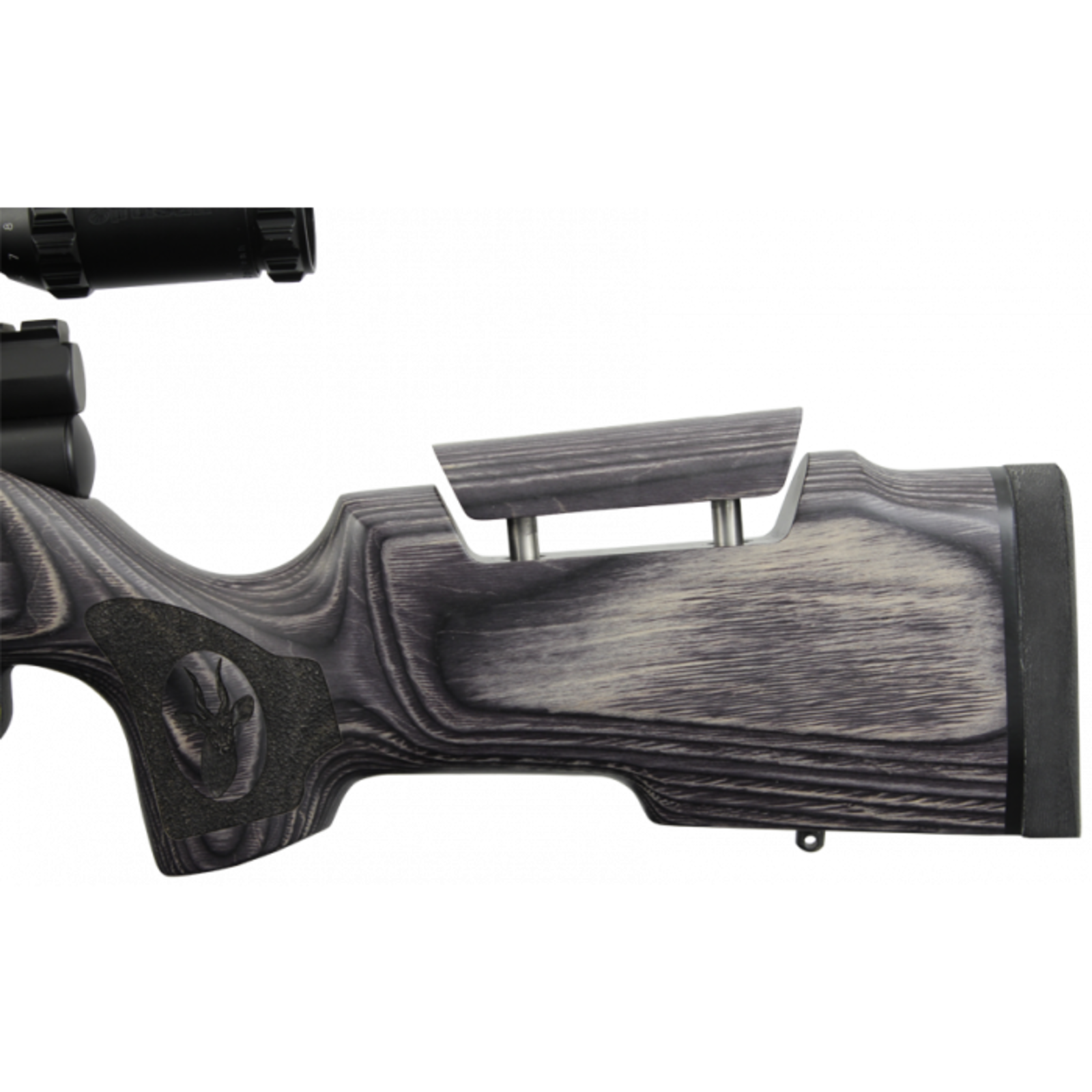
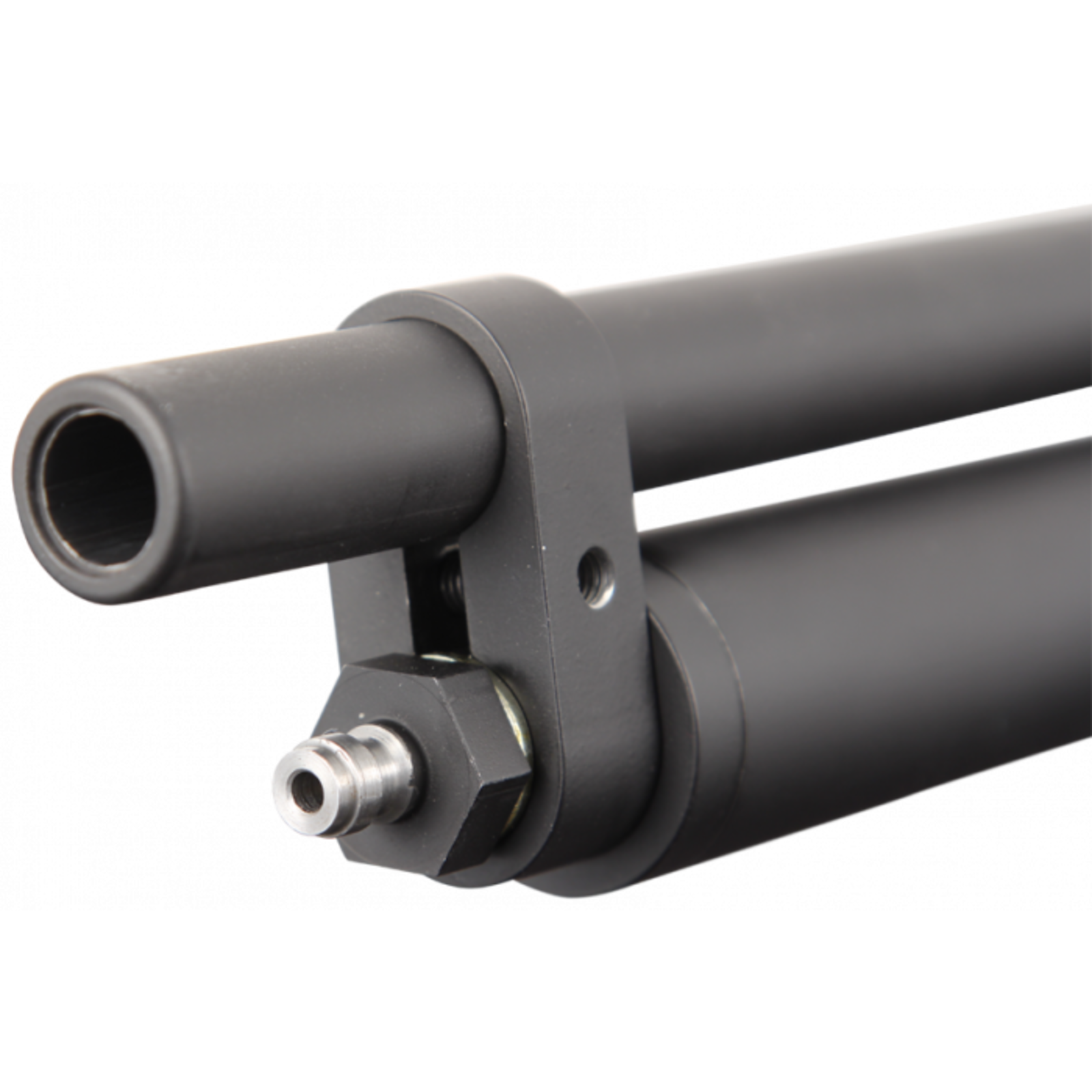
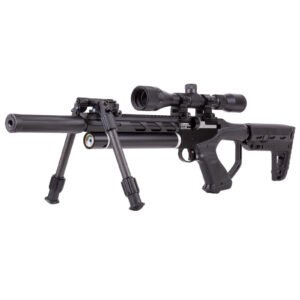
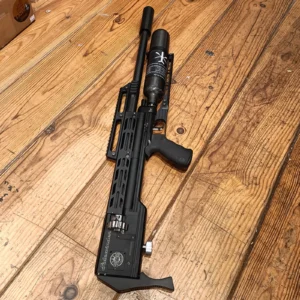
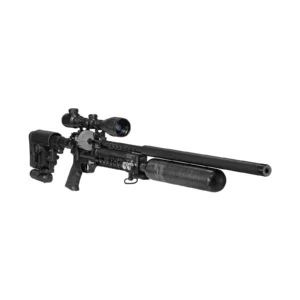
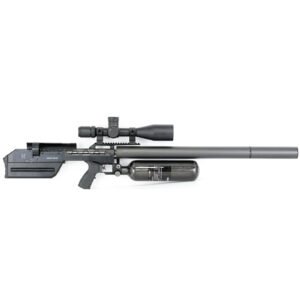
Reviews
There are no reviews yet.